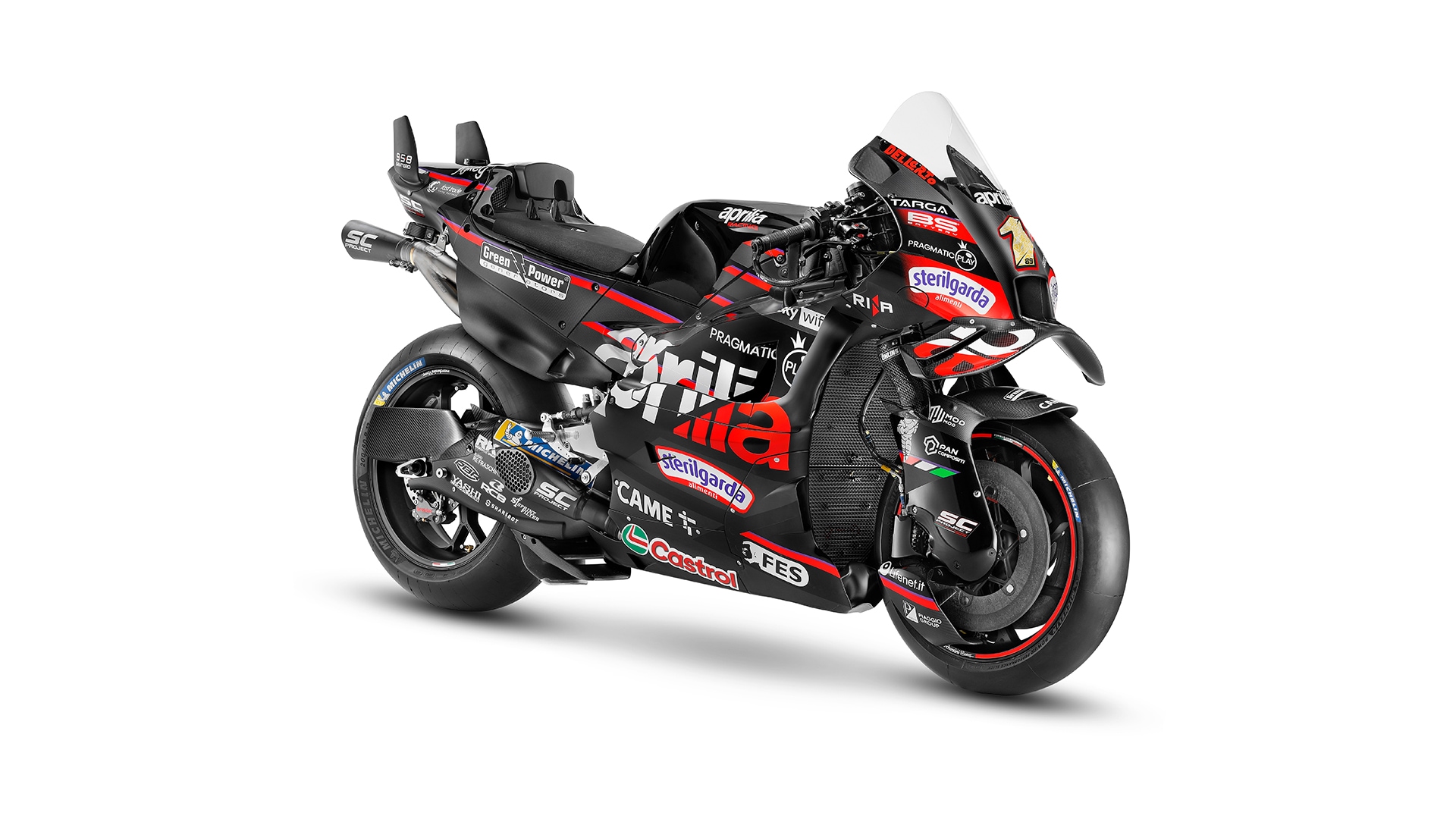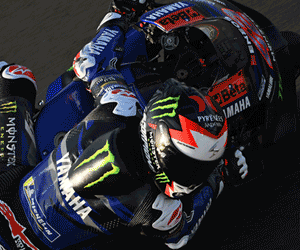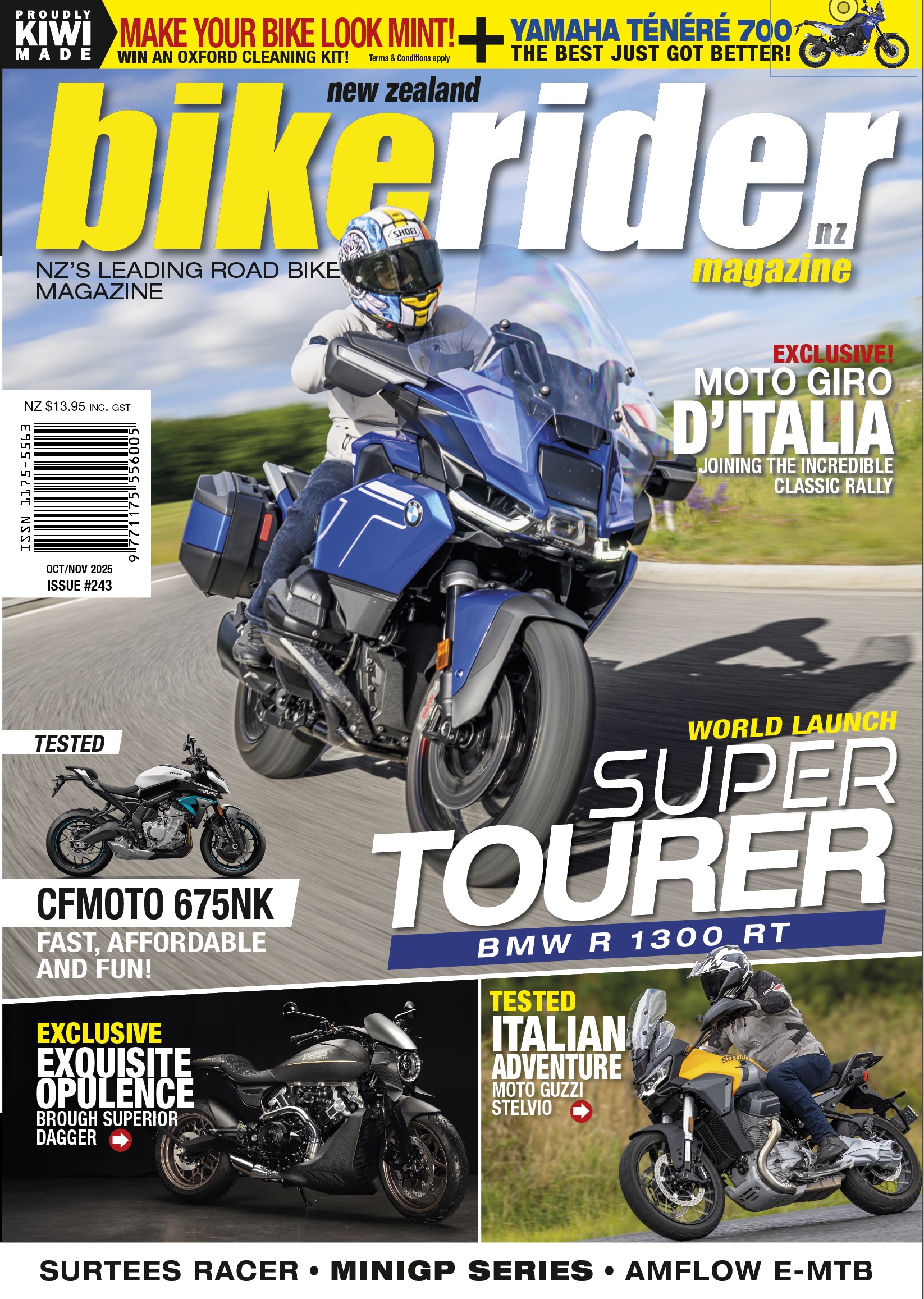- Rare patents filed for MotoGP machine
- Includes advanced aero package
- Could feature on the upcoming XGP
Aprilia has become one of the most inventive players in MotoGP’s aerodynamic race over the past few seasons. Much of that progress comes from Marco De Luca, a former Formula 1 aerodynamicist who now leads Aprilia’s technical efforts. A series of new patent filings authored by De Luca offers a rare look at concepts the team has tested, many of which haven’t yet appeared in regular competition.
The documents include drawings of the RS-GP fitted with features seen briefly during preseason outings. These additions go even further in exploiting downforce and ground-effect principles than what is already common in MotoGP.
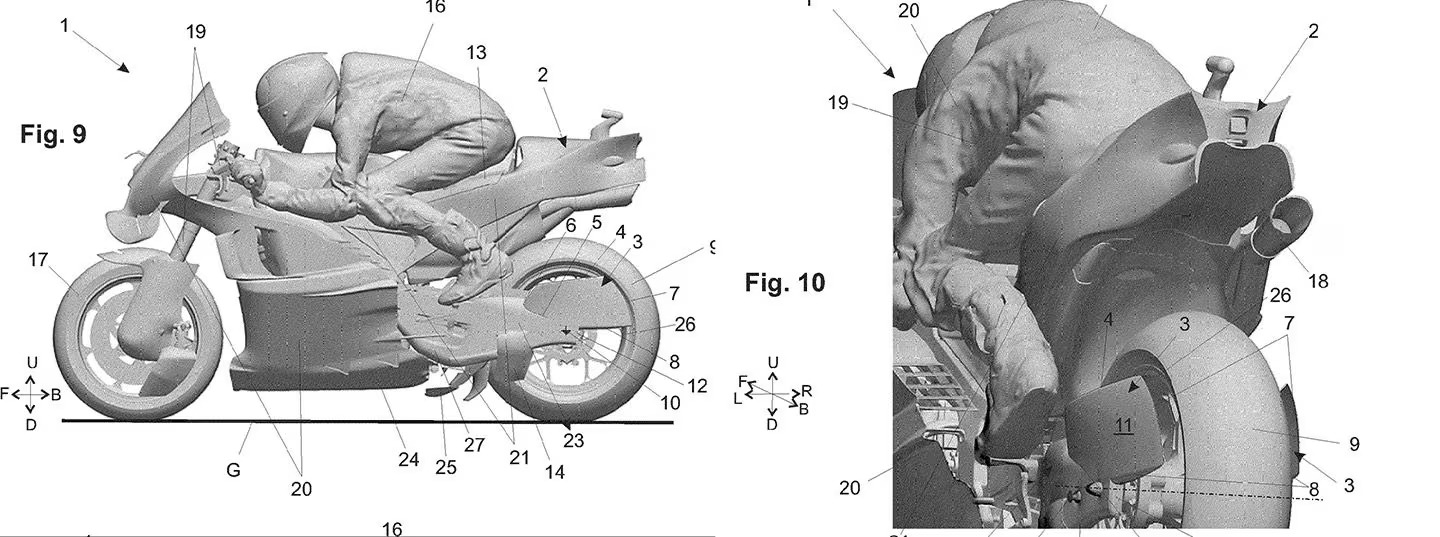
One of the most striking designs involves unusual extensions from both sides of the swingarm. These panels form a vertical wall that almost covers the upper section of the rear wheel. At first glance, they seem to simply guide airflow smoothly over the wheel to reduce drag and improve top speed. While the patents confirm this aerodynamic benefit, they emphasise that the true intention is to enhance cornering performance.
Another detail shown is a smaller wing element positioned just in front of the rear wheel spindle and tilted inward. At full lean angle, this piece becomes parallel to the track and generates a ground effect. By accelerating the air trapped between the wing and the asphalt it lowers the pressure and effectively pulls the bike downwards for better grip.
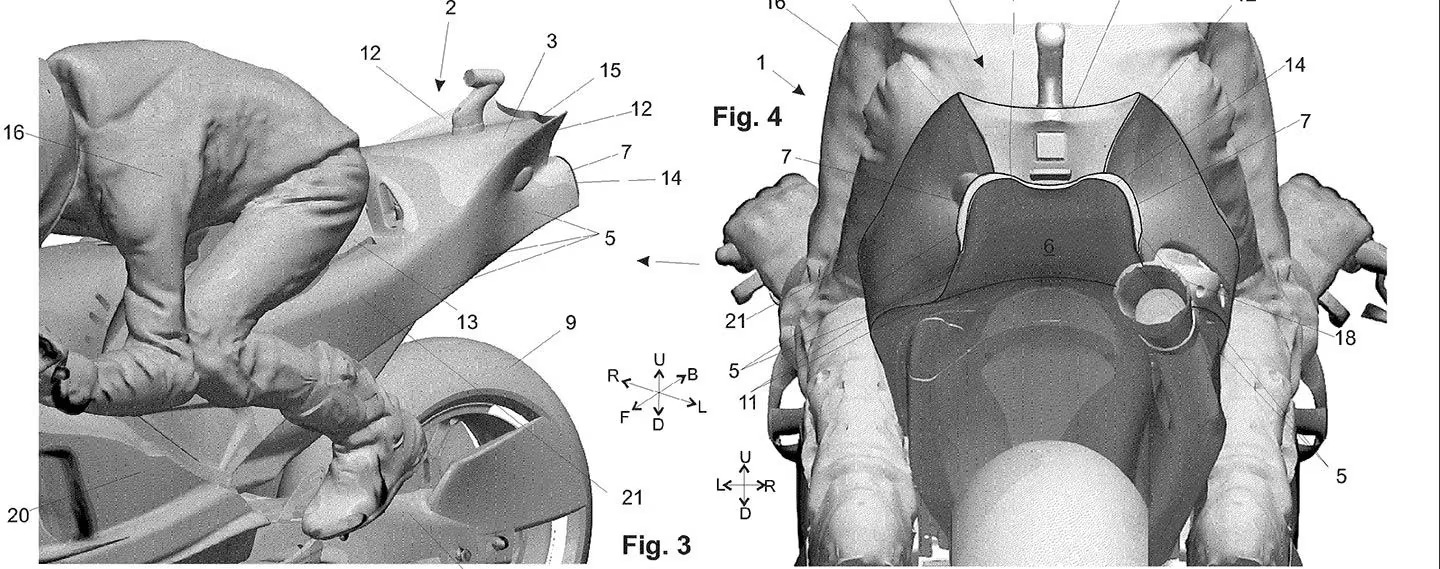
A second patent looks at the area above the rear wheel. Aprilia has long used a tunnel-shaped cutout under the seat and a raised tail spoiler, and the filings reveal refinements to that idea. The tunnel accelerates airflow to create extra downforce and stability, while the upturned spoiler at the rear helps draw air out from beneath the tail unit. Together with vertical wings on the tail, the design aims to balance airflow and improve overall stability.
While it is unusual for a MotoGP team to patent such solutions, since rivals are free to copy ideas for racing, the move makes sense in Aprilia’s case. If the patents are approved, they would block other manufacturers from using the same technology on production motorcycles. With Aprilia already developing its next high-performance, track-oriented replica, the XGP, it’s possible that some of these innovations could eventually make their way from the RS-GP prototype to a production bike.

